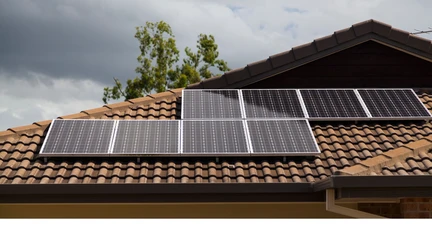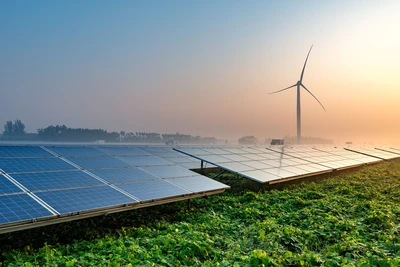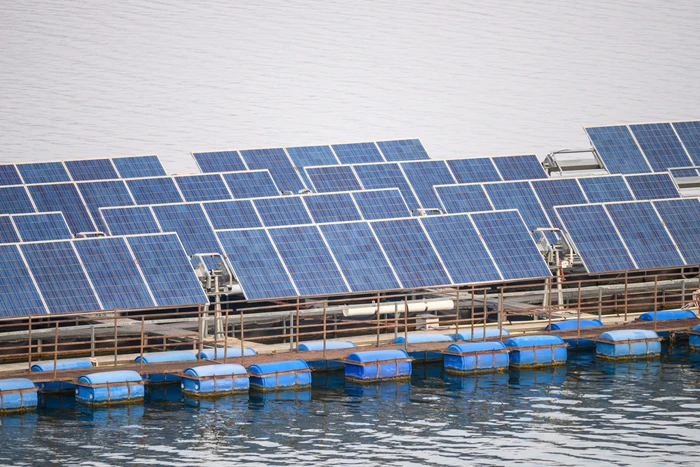Being Sun Smart: an interview with Dr Tony Bittar, Front End Solar. Part 2
In Part 2 of this interview, we continue discussing solar and alternative energy with industry pioneer, Dr Tony Bittar of Front End Solar.

Part 1 of this interview can be found here
WCL: There’s an estimated 3.3 percent of households (67,000) connected to the grid with solar energy systems. What could government, at either a local or central level, do better to encourage the uptake?
TB: The structure of the electricity industry has been the biggest hurdle. There are big players who made sure you couldn’t get the benefit of what the system gives you. For example if you sell them electricity, they used to buy it from you at eight cents a kilowatt hour. They wouldn’t give you any more and there was no requirement to pay more. Then they sell it back to you at 25 cents. So the industry has been structured with that burden on anyone who wants to produce electricity from solar PV.
It’s changing now. The industry, through the Electricity Authority, SEANZ and others, is pushing hard to make it a much fairer playing field. You end up with even the big companies now paying 15 or 17 cents per kilowatt hour for your electricity. The ideal thing would be for electricity to be the same cost either way. You sell it to them, they store it for you, they bring it back to you, maybe at the minimum premium because they have to store it.
Putting a solar system on your roof can actually wipe your power bill within six to eight years. You are making money after that. Good money. Solar is very financially viable in New Zealand, anywhere in New Zealand.

WCL: Late last year a solar company went into liquidation. What should a potential buyer consider if making the conversion to a solar system?
TB: There’s something I see more and more and I’m not very happy with it. Some companies have given inverter and battery systems to the client. They use the clients roof but don’t pay for it. They create electricity from that system, put it in their battery and then control the electricity to their client. Clients that I know of get an offset of $200, maybe $300 a year. These companies are using the electricity mostly for their benefit, not the benefit of the client.
The philosophy behind this is what I don’t follow. It’s saying we pretend to give you a system but the system is ours. We will maintain it and use it. We won’t pay you for using your roof except to give you an offset of $200 a year. It’s not giving the client anything except slightly cheaper electricity.
If my clients have enough money, or can borrow enough money to own all the benefits of their system, all the benefits the market allows them, that’s the solution we aim for.
To clarify, if you have a battery you actually allow the distribution network not to upgrade their system. You’re helping them by taking a load off their system.
In the good old days they used to say “Oh, 50 houses here, we need to put a transformer that is this size, because each load is 8000 kilowatt hours. 8 x 50 is 40,000 kilowatt hours that’s the type of transformer we need, that’s the type of wiring we need so that’s what they put in”.
All of a sudden you put solar in there, it’s not 8000 it’s 3000. The load is gone. So if you put 50 houses with solar in the mix, the load is very much smaller They don’t need to put a huge transformer, or hundreds of poles or thick wires. They are gaining in their investment.
At the moment that is not being captured by the solar clients.
I have tried to do something with marae. We had a contract with MBIE to put solar on fifty houses in the Hokianga. The idea was that all would have batteries and they would produce locally, store locally and benefit locally. If need be, talk to the distribution network and say “Because these fifty houses are taking a load off your networks your’re benefitting, so why don’t you pay us some contribution towards increasing the battery”.
That’s at the heart of what I would like to do – have the people who pay for the system, gain the maximum benefit from the system. Not give away the benefits to the distributors or the generators. At the moment, in New Zealand, that hasn’t happened as much as it should.
It can happen through different mechanisms; the Electricity Authority could recognise that people who put batteries in their houses are contributing to the distribution network, offsetting the upgrades and things like that. The real capture would go to the client who pays at the beginning.
The philosophy is for those who put solar systems on their roof top to capture the maximum benefit possible within the system. People say we want solar, we want to cut off from the grid and I say “NO, don’t cut off from the grid. You can use the grid as part of your storage, but you are also contributing to the strength of the grid so they should be able to accept that you are helping and pay you for that”.
WCL: The national grid is increasingly vulnerable to extreme weather events. Are home solar systems also vulnerable to things like high winds, lightening and hail?
TB: Risk assessment in these situations goes along with what’s called n-rules. N-1, n-2. So if one system goes down out of n-systems what happens? If you have a big generator system, and it gets hit it’s out.
If you have solar you have a thousand systems, independently producing and ten of them go down, you still have another 990.
So the distributed generation systems are a lot more robust to events of any type, than a concentrated centralised system. That’s a given irrespective of whether the technology is solar or not. So solar in particular is very strongly distributed so it has an inherent resilience.
That is the essence of centralised production. You concentrate everything in one area and it goes down and “boom – everybody suffers. Whereas if you have distributed generation its quite different, it’s much safer.
The industry has developed a lot of standards, a lot of standard tests, a lot of methods of calculation, methods of meeting requirements. Sometimes there are people who say, these are expensive. And they are expensive. You can get cheaper panels but they are not guaranteed for 10 or more years.
Our company is very much focussed on designing and building quality. We give resilient systems.
WCL: Internationally, large scale solar farms have been enhanced with wildflower plantings and the like with a study now finding increased biodiversity is spilling over and benefiting surrounding farms. Are we doing anything similar in New Zealand?
TB: What is happening in New Zealand is very interesting. We started doing work on agrivoltaics. The usual focus for agrivoltaics is to raise the panel up – these are large scale fields – so that sheep can walk through without damaging them. Then all of a sudden both overseas and here there seem to be a lot of benefits from having sheep. They keep the grass down, they use the panels for shade and shelter and there is great benefit in double use of the land.
They whole thing with agrivoltaics is that you use the land for a double purpose. Farming and energy production. It’s being espoused in New Zealand. The government is saying “We want solar farms on farmland”. I don’t know how they are going to incentivise it, but it’s a good idea for our country, we have so much pastural land right across the motu.
So agrivoltaics is something that is important. Wildflower growing is not being mentioned in New Zealand very much. What’s important is the double land use. There are surprising benefits from agrivoltaics.

WCL: Moving on to large scale international projects your company is involved with. Tell us a bit about the floating solar farms in the Pacific.
TB: The main issue is that most of the islands in the Pacific have been producing electricity with diesel. Diesel prices there are horrendous but they are forced to buy diesel because that’s the only way to produce electricity. The diesel prices they pay are international prices loaded with shipping costs. This is a serious load on the governments budgets for these countries.
There’s no way people in places like Tuvalu would be able to pay for electricity. What happened was they used kerosene and coconut oil and they affect their health. So the benefits of offsetting diesel is not just in the price but in ancillary benefits as well– health, education, commerce and the like.
My company and international partners had some contracts with development banks to do feasibility studies to see how these Island countries can offset their diesel use and mitigate climate change. These are vulnerable countries. The highest point in Kirbati and Tuvalu is about three metres above sea level and they see the level rising. These are atolls with very little land.
The ADB contracted us on several fronts. The first was with Kiribati to put in a 5 megawatt system with batteries to make sure the electricity in Tarawa was less reliant on diesel.
5 megawatts was the first step. They asked us to put in another 2.5 megawatt and the third step was to go to Tuvalu and put in systems there. One more step was extra PV. The first PV was land based but the land is very scarse. So we started talking about new, novel Technologies like floating PV systems that can go on lakes, on lagoons and we’re doing the feasibility for a five megawatt system on the lagoon in Kiribati and a one megawatt on the lagoon on Tuvalu.
We’ve also done feasibility studies for 11 of the 14 of the Pacific Island countries to produce a roadmap towards 100 percent renewables. We identified sites for floating PV in those 11 countries. The ADB has come back and said we want you to concentrate on Kiribati and Tuvalu to do floating PV. We’re presently getting these two up and running.
WCL: Circling back to other advantages to solar farms as we talked about with the agrivoltaics – the installation of the floating PV can potentially improve the health of the reefs and have other environmental benefits can’t it?
We have devised a barrier to protect the floating PV from large ocean waves. We have worked with the South Pacific Commission Research team to model the wave patterns inside the lagoon. Using that we have designed a barrier to protect the floating PV and on top of that to do reef regeneration.
So for this programme in Kiribati and Tuvalu we’re going to be putting cages in the water and feeding them with DC – direct current electricity – and that promotes the reef growth. So it actually improves the reef size and when you do that the fishing is better for the local community.
We have also been asked to do what’s called productive uses of electricity. Along with reef regeneration some of the other productive uses of electricity are to do with making attempts at improving health and welfare and even improving business and economic growth. For each country we have looked at what’s possible, what’s feasible, what’s actually best for that country and proposed it and the ADB has said yes, go ahead and do that as well.
So its not just electricity production. It’s going beyond that into how the use of electricity can generate other outcomes. Be it health, be it education, be it commerce. Even circular economy. Many of these countries end up with hundreds and hundreds of shipping containers just rusting away. Is there a possibility of doing a circular economy where you take that rubbish and you make something out of it and then sell it or use it internally. We’ll see what transpires.
WCL: When will this all be up and running?
For the floating PV we’re in the bidding process right now. So within the next weeks or so we will select the supplier and the contract will be drawn. We hope to start by the end of this year.
The first project in Tarawa, Kiribati - 7.5 megawatt and 13.5 megawatt hours of battery - that will be finished in August-September.
It’s transformational for these communities.
WCL: How do you feel about being involved in projects like this?
I love it. I love it. You can see that you are doing something positive. It enhances a lot of things. It’s not just “You’ve got electricity now, we can go away” It’s enhancing their life. What more can a person ask?
If you would like to read more about solar energy have a look at these items in the WCL collection:
Solar electricity basics : powering your home or office with solar energy by Daniel Chiras, 2020
The switch : how solar, storage and new tech means cheap power for all by Chris Goodall, 2016 Also available as an ebook
Energy and civilization : a history by Vaclav Smil, 2017. Also available as ebook
My efficient electric home handbook : how to slash your energy bills, protect your health & save the planet by Tim Forcey, 2024. Also available as ebook
No miracles needed : how today's technology can save our climate and clean our air by Mark Z Jacobson, 2023